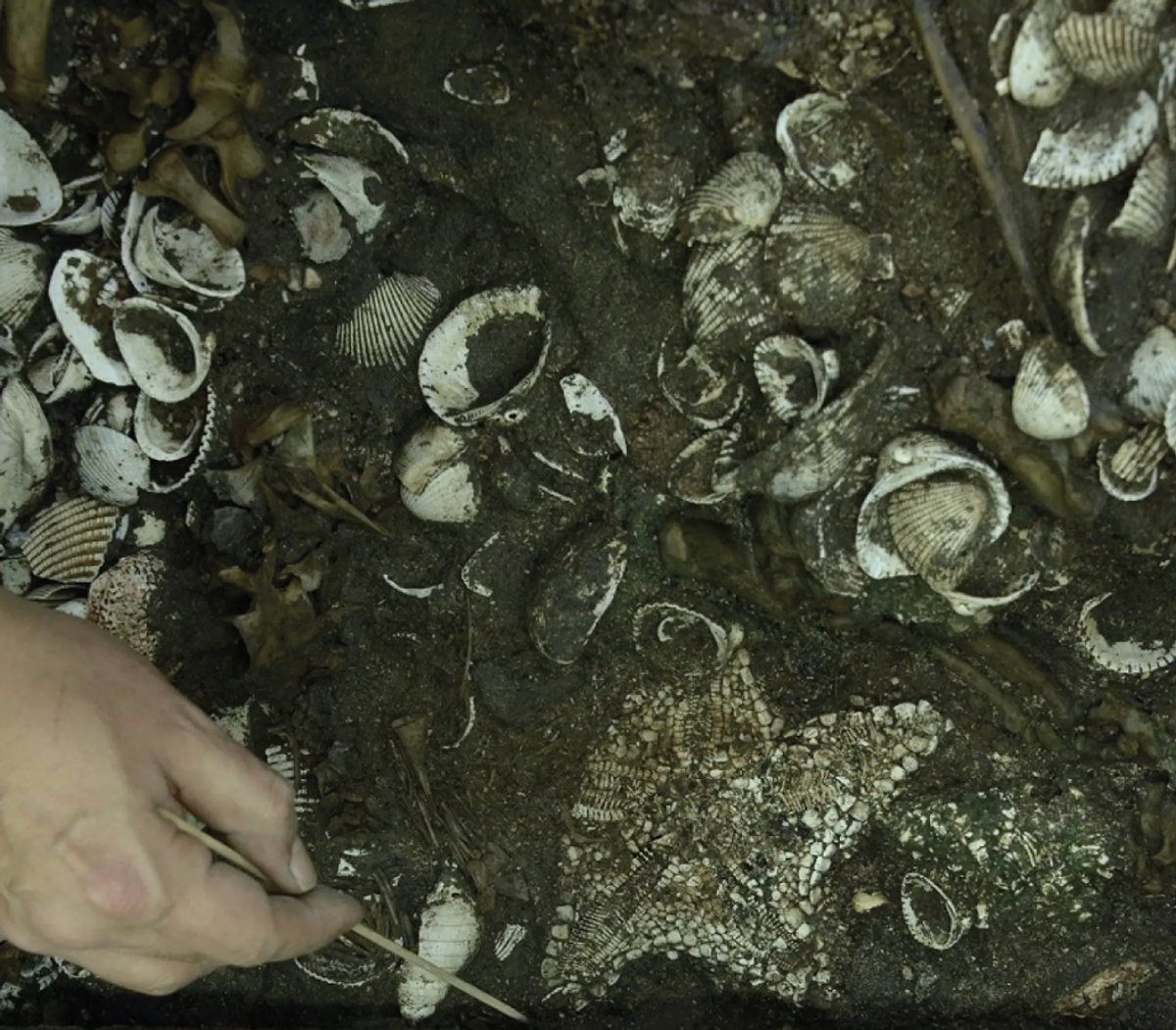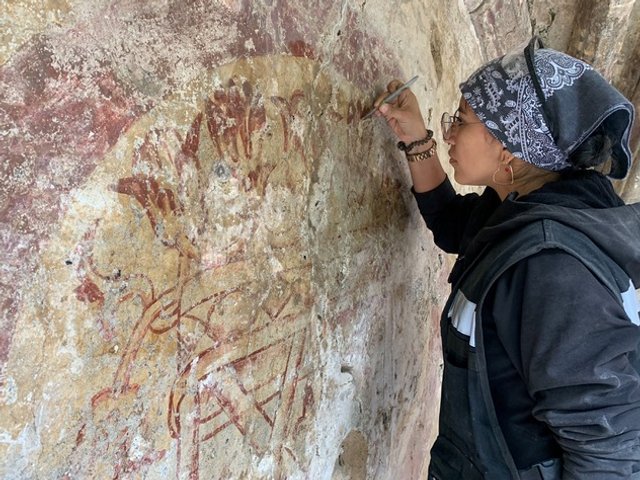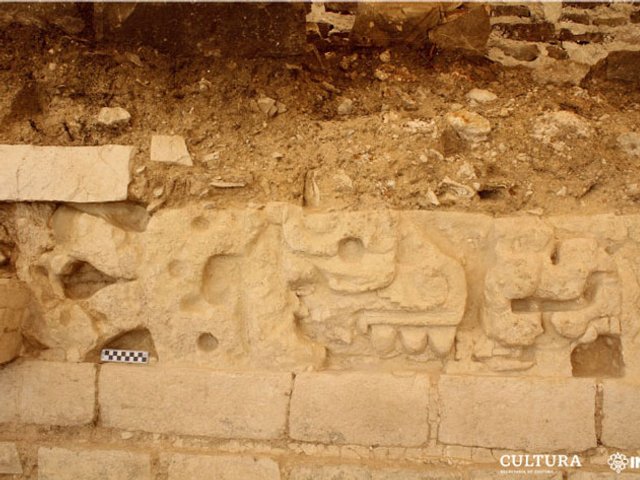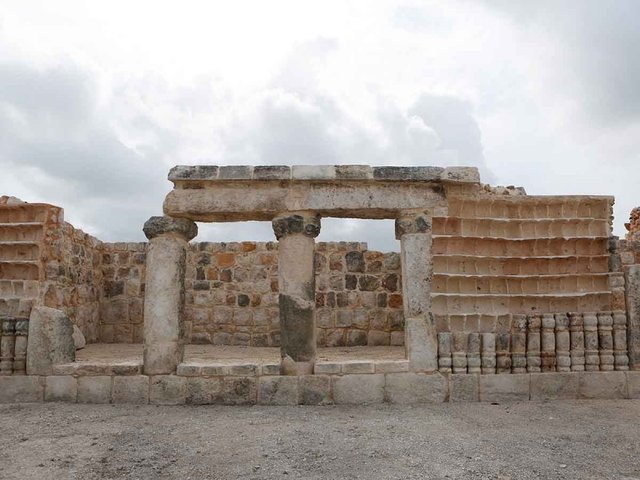Archeologists with Mexico’s National Institute of Anthropology and History (Inah) have excavated a trove of ritual offerings at the Templo Mayor archaeological site in Mexico City. The discovery includes more than 160 starfish skeletons of the Nidorellia armata species, which would have been collected more than 300 kilometres from the site, offering further insight into the breadth of the Aztec Empire before Spanish conquest.
The Templo Mayor was the centrepiece of the Aztec metropolis Tenochtitlán, once buried at the direction of Spanish conquistador Hernán Cortés and rediscovered in the 20th century. It is thought to have been built around 1325 and renovated in the late 1480s under the Aztec leader Ahuizotl, who ordered the renovation of various ceremonial structures in Tenochtitlán, adding several layers to the temple, which now sits in a roped-off area of the blusting Zócalo plaza in central Mexico City.
The starfish were discovered along with pieces of coral, seashells, fish skeletons and a figurine of a female jaguar wielding a spear within a circular structure called the Cuauhxicalco. “A good part of the Mesoamerican peoples believed that the origin of the world was linked to the sea, therefore, marine organisms were treated as relics,” says the archeologist Miguel Báez Pérez.
He adds, “Their military power allowed them to bring thousands of marine objects and recreate an entire aquatic environment in Tenochtitlán itself.”
It is the largest ritual offering unearthed in the Tenochtitlán archeological site. Researchers believe the sacred enclosure in which the artefacts were discovered, located in the sixth construction stage of the temple (thought to date to 1500CE) possibly also held the cremated remains of past rulers. Ahuizotl and his descendents, Moctezuma II and Cuauhtémoc, were the last Aztec rulers before the Spanish conquest. Cortés had Cuauhtémoc executed in 1525.
The ancient pyramid of Templo Mayor was the central temple of the Mexica people and dedicated to Huitzilopochtli, the god of war, and Tlaloc, the god of rain and agriculture. Upon the Spanish conquest, Cortés built a Christian cathedral on the site.






